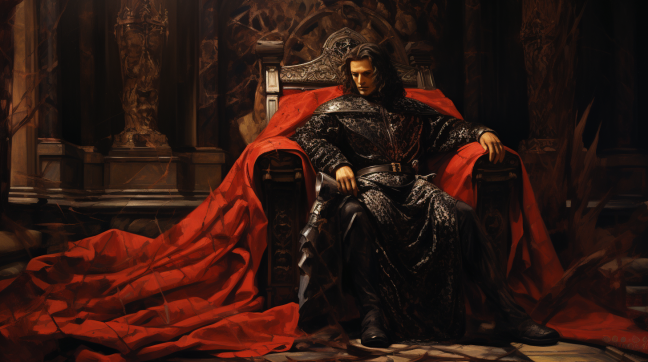Early Life: The Making of a Warrior
Gilles de Rais was born into the House of Montmorency-Laval, one of the oldest and most distinguished families in Brittany. His father, Guy de Laval, was known for his martial prowess, which Gilles inherited. French historian Georges Bordonove described his upbringing as “soaked in military tradition, but also exposed to the opulence that wealth could provide.”
Meteoric Rise: A Companion of Joan of Arc
At the Siege of Orléans in 1429, Gilles fought alongside Joan of Arc, eventually becoming her chief lieutenant. His bravery and combat skills were noteworthy. The Orleans city archives document him as “A knight of great bravery, trusted by both Joan and the Dauphin.”
The Downward Spiral: A Life Unraveling
After Joan of Arc’s death in 1431, Gilles retired from military life and returned to his estates. He quickly squandered his fortune on extravagant theatrical productions and costly ventures. Financial desperation drove him into the company of occult practitioners. Regine Pernoud stated in her book “Joan of Arc By Herself and Her Witnesses,” “Gilles’s profligacy had the intensity of a man running out of time and options.”
Macabre Rituals and Kidnappings: A Man Transformed
By the late 1430s, Gilles was heavily involved in alchemy and black magic, hoping to turn base metals into gold. His crimes escalated to the kidnapping and ritualistic murder of young boys, a deed he believed would grant him power. Robert K. Ressler, in his seminal work “Whoever Fights Monsters,” mentions, “The rituals had a consistency to them that suggests a disturbing level of premeditation.”
The Trial: Public Outcry and Legal Proceedings
Gilles was arrested in September 1440. During his trial, eyewitness testimonies and physical evidence were presented against him. Étienne Blanchard, a chronicler who attended the trial, wrote, “His confession had an air of bravado, as though he were still playing a part in one of his own dramas.”
The Execution: A Morbid Finale
After confessing, Gilles was sentenced to die by hanging and burning. On the day of his execution, large crowds gathered. Reports from the era note that Gilles faced his execution with a strange calm. Jacques Heers, a noted French medievalist, commented, “The man who had once been a war hero was now a spectacle of disgrace.”
Lasting Impact: Bluebeard and Beyond
The case of Gilles de Rais has had a lasting cultural impact. He is often cited as the historical inspiration for the Bluebeard legend, a story that warns of the dangers hidden behind charming exteriors. Ronald Hutton observes, “The Bluebeard tales have been adapted in many languages, and the original figure who inspired them, Gilles, remains equally captivating.”
Reexamination: Calls for a New Look
Despite the consensus on his guilt, there have been calls to reexamine the evidence against Gilles. Jonathan Sumption, however, is critical of these endeavors, saying in a BBC documentary, “The trial was a landmark in the use of eyewitness testimony and physical evidence, even by modern standards.”
The Enigma That Was Gilles de Rais
Gilles de Rais remains an enduringly complex figure, and the tale of his rise and fall encompasses the multifaceted and sometimes contradictory aspects of human nature. His life serves as a sobering tale of how even the most heroic can fall into darkness, a theme that continues to resonate through time.
